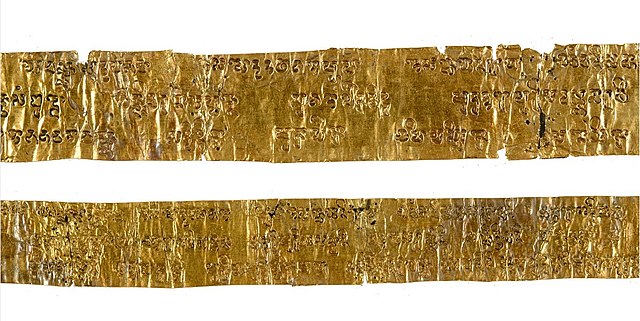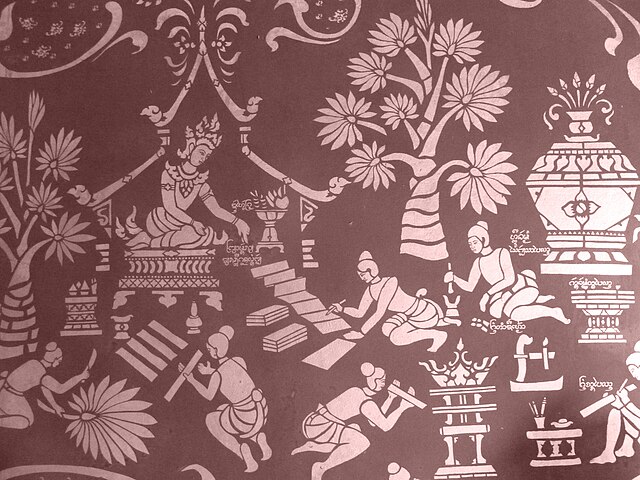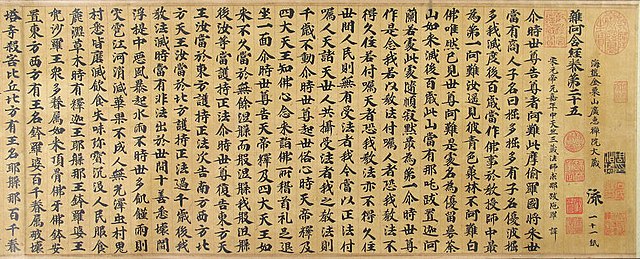Tipiṭaka or Tripiṭaka, meaning "Triple Basket", is the traditional term for ancient collections of Buddhist sacred scriptures. The Tripiṭaka is composed of three main categories of texts that collectively constitute the Buddhist canon: the Sutra Piṭaka, the Vinaya Piṭaka, and the Abhidhamma Piṭaka.
Tripiṭaka manuscript from Thailand
Tripiṭaka manuscripts on Gold Plate, Burma
The woodblock of Tripiṭaka Koreana in Haeinsa, Hapcheon, South Korea
Tripiṭaka writing
Buddhist texts are religious texts that belong to, or are associated with, Buddhism and its traditions. There is no single textual collection for all of Buddhism. Instead, there are three main Buddhist Canons: the Pāli Canon of the Theravāda tradition, the Chinese Buddhist Canon used in East Asian Buddhist tradition, and the Tibetan Buddhist Canon used in Indo-Tibetan Buddhism.
Illustrated Sinhalese covers and palm-leaf pages, depicting the events between the Bodhisattva's renunciation and the request by Brahmā Sahampati that he teach the Dharma after the Buddha's awakening
Illustrated Lotus Sūtra from Korea; circa 1340, accordion-format book; gold and silver on indigo-dyed mulberry paper
Folio from a manuscript of the Aṣṭasāhasrikā Prajñāpāramitā Sūtra depicting Shadakshari Lokesvara, early 12th century, opaque watercolor on palm leaf
Samyutagama Sūtra, Medieval China, 11th century








